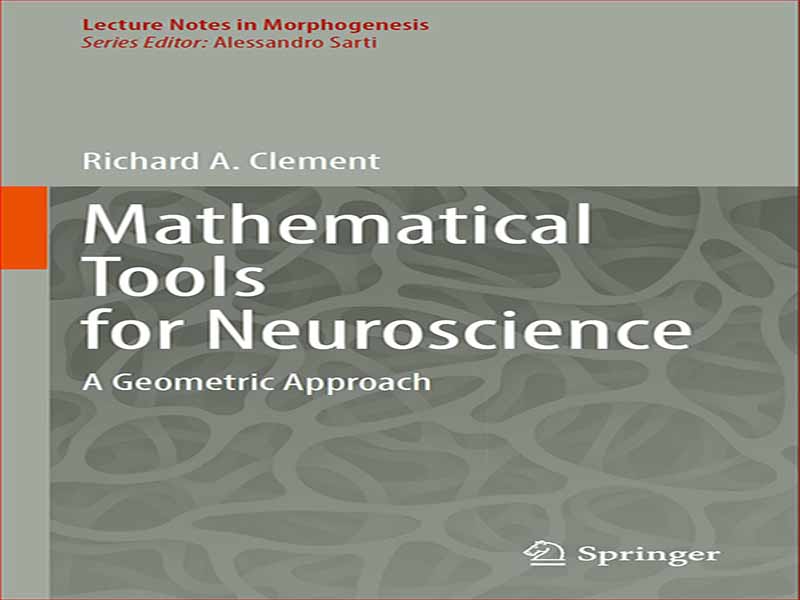- عنوان کتاب: Mathematical Tools for Neuroscience – A Geometric Approach
- نویسنده: Richard A. Clement
- سال انتشار: 2022
- حوزه: ریاضیات کاربردی, علوم اعصاب
- تعداد صفحه: 168
- زبان اصلی: انگلیسی
- نوع فایل: pdf
- حجم فایل: 3.93 مگابایت
این کتاب به عنوان مقدمه ای مختصر اما مستقل برای کاربرد تکنیک های هندسی برای درک مغز نوشته شده است. این رویکرد با توصیف ساختارهای داده مورد استفاده برای توصیف هندسی اشیاء و متعاقباً نشان دادن چگونگی اندازهگیریهای ارائه شده توسط نورونهای حسی برای کشف توصیفات هندسی اشیاء موجود نشان داده میشود. رویکرد مشابهی برای توصیف اقدامات انجام شده توسط یک حیوان به منظور دست زدن به یک شی، و آنچه که در سطح انقباضات ماهیچه ای شامل می شود، اعمال می شود. در نهایت نشان داده میشود که رویکرد هندسی منجر به تکنیکهای آزمایشی جدید و متمایز میشود. رویکرد این کتاب به شدت بر نمایش بصری مطالب متکی است. از این نظر، من تحت تأثیر کتاب دینامیک: هندسه رفتار اثر آبراهام و شاو 1 قرار گرفتهام که مقدمهای جامع بر ایدههای دینامیک غیرخطی کاملاً در تصاویر ارائه میکند. آنها کتاب خود را نوشتند تا نشان دهند که ایده های ریاضی را می توان به راحتی منتقل کرد، و من فکر می کنم مطالب موجود در آن به دو دلیل به اندازه ای که ممکن است توسط دانشمندان علوم اعصاب مورد توجه قرار نگرفته است. اولاً، هیچ نمونهای از کاربردهای علوم اعصاب در کتاب وجود نداشت، و ثانیاً، آنها مرحله اضافی چگونگی تبدیل ایدههای بصری شهودی را به معادلاتی که میتوان برای پیشبینیهای قابل آزمایش استفاده کرد، درج نکرد. این کتاب قصد دارد این شکاف ها را پر کند.
This book was written as a brief but self-contained introduction to the application of geometric techniques to understanding the brain. The approach is illustrated by characterising the data structures used to describe objects geometrically and, subsequently, showing how measurements provided by sensory neurons can be used to uncover the geometric descriptions of the objects present. A similar approach is applied to characterising the actions made by an animal in order to handle an object, and what this involves at the level of muscle contractions. Finally, it is shown that the geometrical approach leads to new and distinctive experimental techniques. The approach of this book relies heavily on visual representation of the material. In this respect, I have been influenced by the book Dynamics: The Geometry of Behaviour by Abraham and Shaw 1that gives a comprehensive introduction to the ideas of nonlinear dynamics entirely in pictures. They wrote their book to show that mathematical ideas can be communicated easily, and I think the material contained in it has not been taken up as widely as it might be by neuroscientists for two reasons. Firstly, there were no examples of applications to neuroscience in the book, and secondly, they did not include the additional stage of how to turn the intuitive visual ideas into equations that could be used to make testable predictions. This book aims to fill those gaps.
این کتاب را میتوانید از لینک زیر بصورت رایگان دانلود کنید:
Download: Mathematical Tools for Neuroscience



































نظرات کاربران